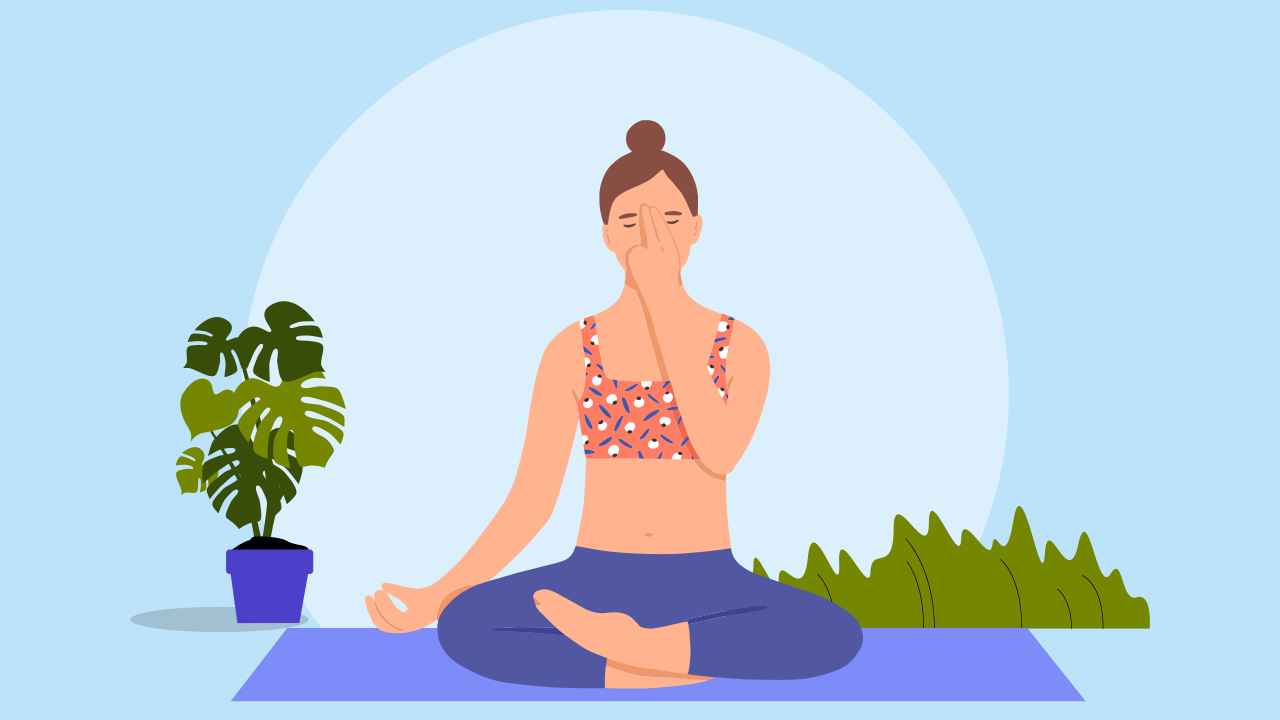
What Is the Difference between Yoga and Other Forms of Exercise?

You may find yoga being interchangeably used as a form of physical exercise. For years, yogis have mastered the art of increasing the functionality of the body’s organs, systems, and processes. The body is a necessary tool, and its longevity and health are of prime importance to yogis who seek spiritual advancement.
To evaluate asanas is to look for a drop in the ocean; we cannot separate them from their philosophical roots. This is precisely why asanas are so distinguished viz-a-viz other forms of physical exercises.
How does yoga differ from other types of exercises?
Compared to any other form of athletic workout regime, the practice of yoga differs in five core areas. These aspects include:
1. Aim and objective
Here are the different ways in which yoga exercises for beginners improve your health and well-being.
- They help in neuromuscular coordination and bring about increased focus on body awareness, developing a connection between the body and mind
- They ensure steadiness and stability by removing agitations and weakness of the body
- They make an effort to transcend the bodily preoccupation and achieve a state of complete freedom from all diseases and discomfort
- They aid in the conditioning of the body and the mind by ensuring the lightness of the body over a longer period
Conversely, other physical exercises focus on health and longevity, increased stamina and endurance capacity, muscle building, performance-enhancing, competition, and skill development, among other aspirations.
So, you need to perform asanas with the motive to evolve the body and mind. This is not expected while playing a sport or doing a simple gym workout. Yoga is a sadhana (a practice) because it focuses on the goal of liberation. Improved health, stamina, endurance, or physical aesthetics are just the by-products of this activity.
2. Manner of execution
Yoga asanas are performed in a very slow, non-deliberate, peaceful, and non-competitive manner. It requires complete concentration of the mind to be immersed in the activity. During this process, you may feel captivated while experiencing sensations in various parts of the body. Traditionally, asanas are held for a longer duration to let the body enter a meditative state.
Most physical exercises are performed in a repetitive, fast, competitive, and aggressive way. This may be done to achieve better physical results, but there is a loss of mental engagement. You may end up performing physical exercises while watching television, listening to music, or talking to someone. All of this can deprive you of the opportunity to enter into a meditative state.
You will find that the practice of yoga is very specific to the individual. It is more of a spiritual endeavor, unlike other physical exercises. So, the spiritual experience is restricted in the case of the latter types of workouts.
3. Nature of physical activity and its effect on the body
Asanas maintain the anabolic and catabolic ratio of the metabolism of the body to normal. So, you may feel more energetic and enthusiastic to do your daily activities.
Other forms of exercise end up increasing this ratio due to which you may experience a loss of energy. You may feel the need to rest after a run or a gym workout due to energy loss. Do note that loss of energy does not necessarily mean that you have burnt excess calories.
Here is a tabular differentiation of the impact of yoga vs other physical exercises on different body processes.
| Target area | Yoga | Other physical exercises |
| Muscular system | Develops muscles evenly over the surface of the body. | Focuses on increasing muscle mass. |
| Heart | Asanas have a calming effect on the body, thereby controlling pressure exerted on the heart. | There is an increased strain on the muscle due to which the blood pressure rises and the heart has to pump more blood. |
| Respiratory system | Slow and gentle movements coordinated with the breath allows the body to relax, thereby improving overall respiration. | Fast pace and constant effort increase the oxygen requirements in the muscles, causing the lungs to work harder. |
| Immune system | Increases the number and functioning ability of the immune cells. | Nature, intensity, and duration of the exercise are responsible for increased immunity. |
| Stress levels | Reduces cortisol levels in the body, which is responsible for stress. So, you may experience stress relief through yoga and meditation. | May increase cortisol levels, as exercise is seen as a stress response by the body. |
Also Read: How Does Yoga Help in Stress Relief?
4. Effect on food and diet
The traditional way of performing asanas is not taxing on the body, which means that you need not follow any specific nutritional intake.
On the other hand, most physical exercises lead to increased food intake along with enhancement of appetite. At times, some forms of athleticism necessitate a particular kind of diet, such as animal protein, fortified foods, vitamins, and minerals.
Yoga paves the way for a gradual change in food intake without impacting overall health. This makes it a safer and more accessible practice for a larger audience.
5. Personality and attitudes
Yoga asanas are practiced with bhavas or attitudes that highlight and reinforce the empathetic part of the human personality. The nature of the asana develops feelings of calmness, confidence, awareness, tolerance, gratitude, and acceptance within the practitioner.
At times, physical practices are effective in inculcating values, such as fairness, team building, equality, and perseverance. However, they do not chart a clear path that you can replicate in life. Also, not all sports and physical exercises intentionally inculcate such values.
The point of highlighting the difference between yoga and other physical exercises is not to put one activity and glorify the other. The purpose is to simply draw distinctions in their approach.
Yoga is a comprehensive and holistic science, which holds your mental, physical, and spiritual well-being at its core. Physical practices may have many benefits that may contribute to your overall development. However, these plus points are not as expansive as the ones that yoga has, which means that they do not propose an alternative way of living.
Also Read: Can Yoga Make You a Better Runner?
Physical exercises have their distinct plus points and give you a unique boost, which yoga lacks. So, it is recommended to do other physical exercises along with yoga to have an all-round and fulfilling workout experience.
Reference
Yoga Versus Exercise | White Swan Foundation (accessed September, 2020)














